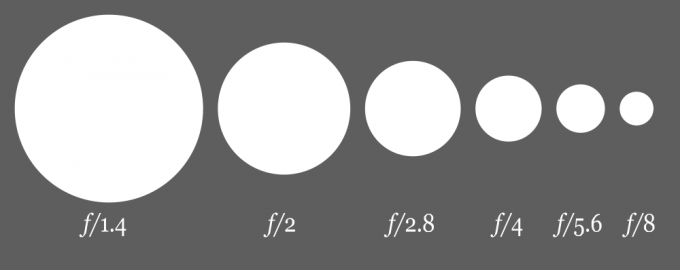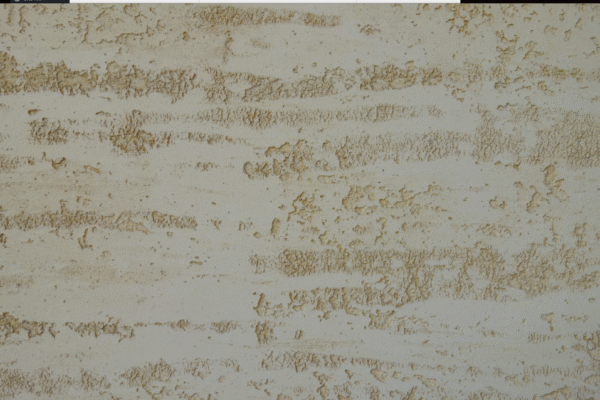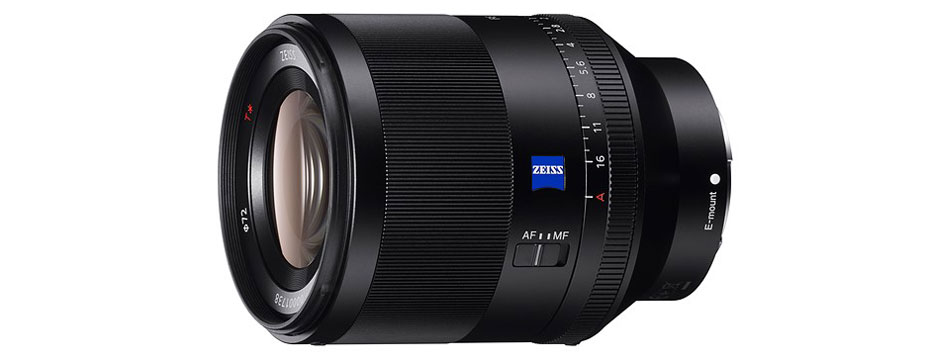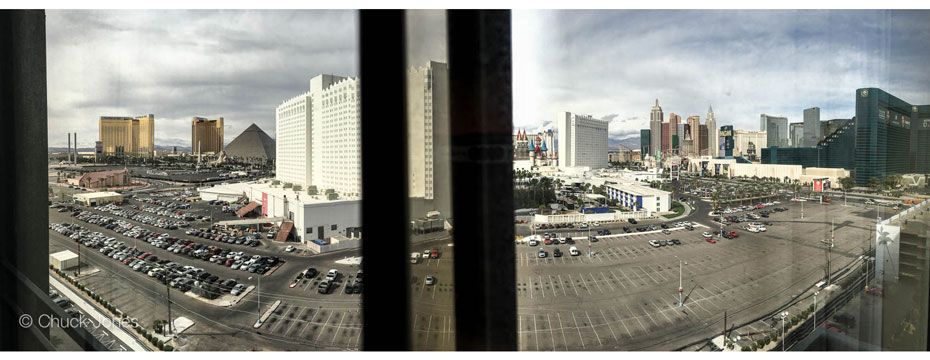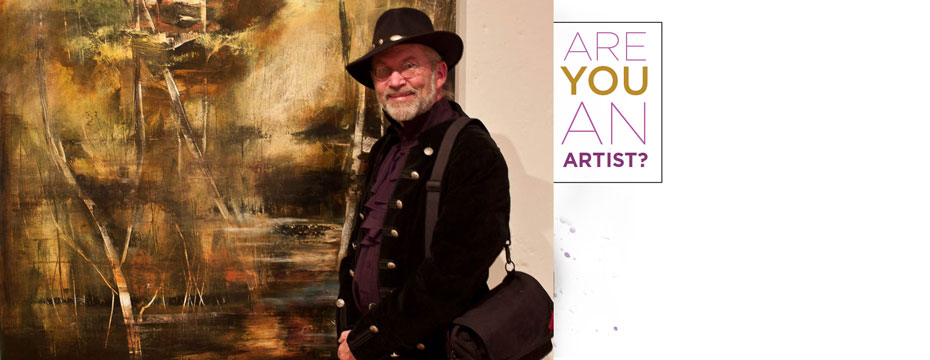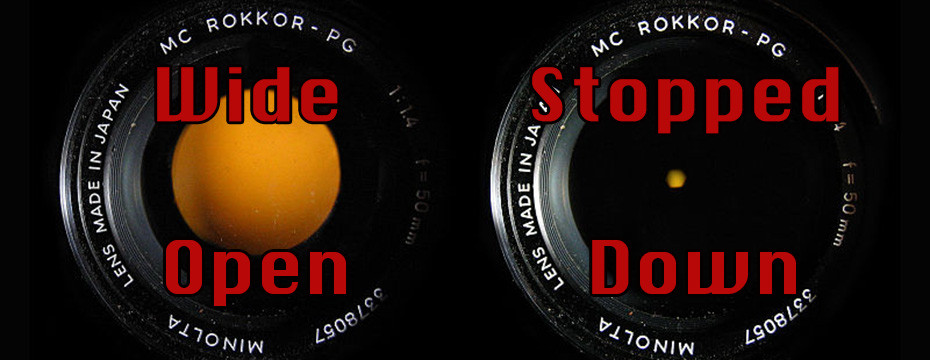
The Ultimate Focus Puller?
The Art Of A Focus Puller
One of the least expensive and most versatile lenses in any filmmaker’s bag of tricks is the 50mm lens. Check around, almost every manufacturer sells a “nifty fifty.” Considered by many to be the default “normal” human vision equivalent, there are more 50mm lenses in existence than the next two focal lengths combined. If you look, every manufacturer has at least one to offer, and many have multiple options available for the 50mm focal length. Take Canon as an example, they still have three 50’s for sale, and have made even more varieties over the years. What’s the difference? The short answer, speed and cost. Cost we all understand, it is measured in dollars. But what about speed? How is that measured, how do you change speed, and what is the actual physical effect of your speed change? And finally, what does the speed of a lens have to do with focus in the first place?
According to Wikipedia, “In optics, the f-number (sometimes called focal ratio, f-ratio, f-stop, or relative aperture) of an optical system is the ratio of the lens’s focal length to the diameter of the entrance pupil. It is a dimensionless number that is a quantitative measure of lens speed, and an important concept in photography.”

A large (1) and a small (2) aperture. Source:Wikipedia
Again, when we are talking about optics, the aperture is the hole you see when you look at the front of the lens, through which light travels back to your film or digital sensor. More specifically, the aperture of an optical system (a lens) is the opening that determines the cone angle of a bundle of light rays that come to a focus in the image plane. The aperture determines how “collimated“ the admitted rays are, which is of great importance and what determines the appearance of sharpness at the image plane, be it film or digital. If the aperture is narrow, (measured by the larger f/stop number) then highly collimated light rays are admitted, resulting in a sharp focus at the image plane. The larger the f stop, the greater the degree of collimated light, so the greater the depth of focus at the focal plane. On the other hand, a wide aperture admits a greater number of uncollimated rays, resulting in a sharp focus at your focal plane only for rays with a certain focal length. This means that a wide aperture results in an image that is sharp around what the lens is focusing on and blurred everywhere else. I jokingly think of these as the wild, untamed light rays. The pretty ones to my eye.
In photography, the application of the second function of aperture is the aperture also determines quantitatively how many of the incoming rays are actually admitted and thus how much light reaches the image plane. The more narrow the aperture, the darker the image for a given exposure time. While this is one method of controlling the exposure speed, a preferred alternative for this function is adjusting the actual shutter speed, the time the shutter stays open, rather than using the f stop as it is otherwise occupied if you are trying to control your depth of field.
Typical one-quarter-stop f-number scale
| f/No. | 1.0 | 1.1 | 1.2 | 1.3 | 1.4 | 1.5 | 1.7 | 1.8 | 2 | 2.2 | 2.4 | 2.6 | 2.8 | 3.1 | 3.4 | 3.7 | 4 | 4.4 | 4.8 | 5.2 | 5.6 | 6.2 | 6.7 | 7.3 | 8 | 8.7 | 9.5 | 10 | 11 | 12 | 14 | 15 | 16 | 17 | 19 | 21 | 22 |
|---|
One of the great cost divides in lenses is the maximum “aperture” the lens can open to. Lower the aperture, measured in f stops, you increase the speed. The difference between an f/1.8 lens and an f/1.2 lens doesn’t sound like much difference, until you stop and consider the effect it has on the amount of collimated light, or the lack thereof. In the case of these three Canon lenses, the cost difference is significant. You can purchase a refurbished 50mm f/1.8 for as little as $99, while the fastest 50mm f/1.2 “L” lens will cost you $1,619 here in the United States.
Assuming an APS-C or Super 35mm sensor focusing at 10 feet:
- At f/1.8, the depth of field (DoF) is about 0.8 feet (10 inches).
- At f/1.4 the DoF range is 0.65 feet (8 inches).
- At f/1.2 the DoF range is 0.54 feet (6.5 inches).
Get in closer, the DoF narrows the closer you get. If you’re shooting video at these f-stops, and your subject leans, turns or moves back and forth as most actors tend to do, you’ll have a heck of a time using the focus rings on lenses to follow them around and stay in focus. On a large home display, a cinema screen, or even a large computer monitor any focusing mistakes can’t be hidden. If you think things are bad at 1080P, just wait, 4K makes it even worse.
So, what’s the point of a cool 50mm f/1.8 lens if you can’t shoot at f/1.8? One way to get around this problem is by using autofocus (AF). However, filmmakers of the professional sort do not usually use autofocus for a number of reasons. For example, you might want to rack focus (move focus from one point to another) at any time for various storytelling reasons. In the professional video world, you need a system that is consistent enough to deliver at every turn and get the job done. The bigger the production, the greater the cost of each take. A Pro doesn’t get to screw up many times before you are fired and replaced by somebody who can get the job done. This need for control is the reason all professionals use a follow focus unit of one kind or another, and operate it manually with the 1st AC acting as the Focus Puller.
One of the biggest challenges shooting shallow depth of field video is pulling focus to track moving subjects. Yes, it can be done by top notch professional focus pullers, but it takes a team to pull it off in complicated situations, and a 1st assistant camera operator with a great sense of timing and touch. To illustrate how important a skill this is, Focus Puller is a union job here in Hollywood. On the set of a major motion picture, it can cost thousands of dollars a take to have talent and lighting all setup and working for repeated rehearsals, and often several takes and retakes just to get one scene shot to the Director’s satisfaction. As you can imagine, this puts a great deal of stress on the first assistant camera operator (AC), the guy who is charged with doing these complex focus pulls in real time as the action unfolds.
Live events can be especially tricky. When the action is recorded live, no reshoot is even possible. You either get it right the first time, or you messed up and never get it at all. Again, a very stressful situation for an AC and the AD in charge of shooting the segment. The market has a proven large demand to be able to shoot scenes with complex moves in one take, provided of course the actors nail it. Presently, there are three different technologies in development to serve this market need. None of them are inexpensive, but as with most things camera today we just need to wait for the lower cost knock offs that invariably come once the market is proven and the copy cat entrepreneurs get their hands on one to copy.
Tracking methods are the main difference between the various systems. Lasers measure direction and distance in one system, a second uses ultrasonic sound waves for this function, while the third system I will go further into here uses electronic sensors placed within an electrical field to triangulate the sensor’s location. While these three methods differ in the way they track the actors, all of them utilize computer controlled motors attached to the focusing ring of the lens. Just as with their mechanical counterparts, these new electronic and computer controlled automated focus pulling systems do require an operator and someone to set them up with simple programming calibration prior to attempting the desired moves.
There are advantages and disadvantages to each type of these autofocusing and focus pulling systems. Lasers use light rays, which sometimes can be seen and can also be blocked by physical objects. Ultrasonic sound waves can also be blocked by physical objects and can be confused by spurious returns from close by walls and other large objects. While these drawbacks and limitations do not apply to the electrical field detection sensors, they do require the sensor transmitter be attached physically or embedded into the object you wish to focus track, something that some actors object to. Some actors refuse to wear a mobile microphone and transmitter, claiming it interferes with their concentration.
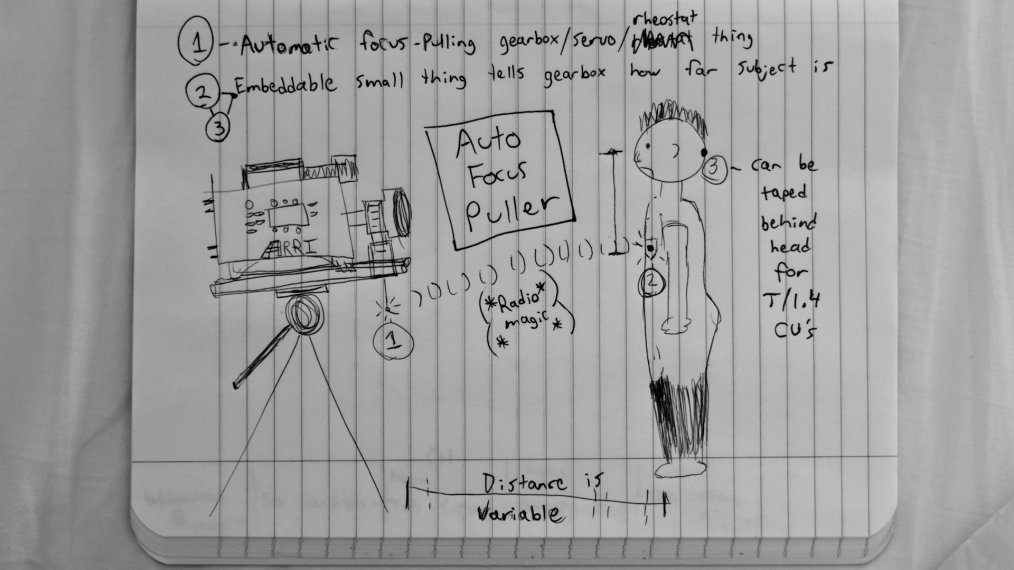
The “Autoprox” is the first automatic focus pulling system I ran across doing research.
Image Source:sacredframes.com
With the accuracy and speed of change increasing all the time, it will not be long until we see the wide deployment of this type of technology. Hopefully, as production ramps up and the manufacturing costs come down, these systems will come down in price. Almost certainly, those imitations being designed and built right now will be much less expensive when they do eventually come to market, so there is hope coming down the line for a system each of us can afford. Without some type of image stabilization and this type of ability to track and nail good focus consistently, the coming 4k consumer revolution is going to make for a pretty fuzzy world view.
Witness Accuracy 04 from Cinema Control Laboratories on Vimeo.
PLEASE RATE THIS STORY! [ratings]



